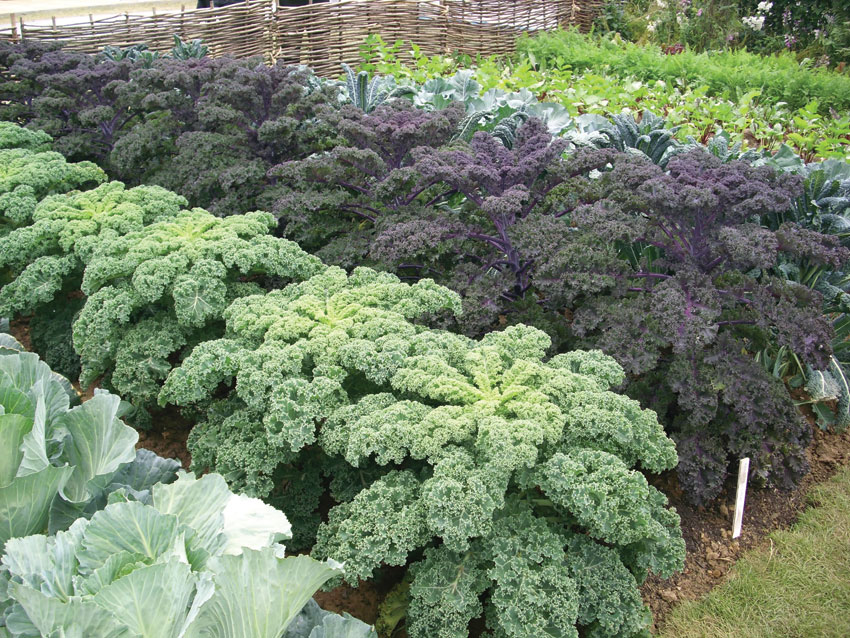Join the green revolution
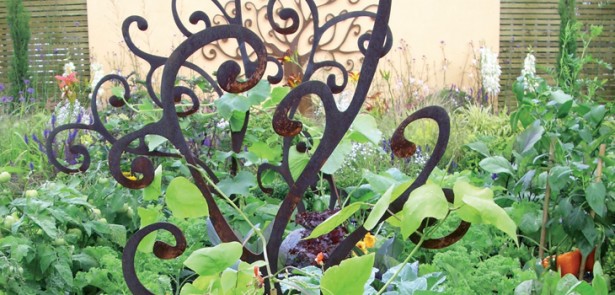
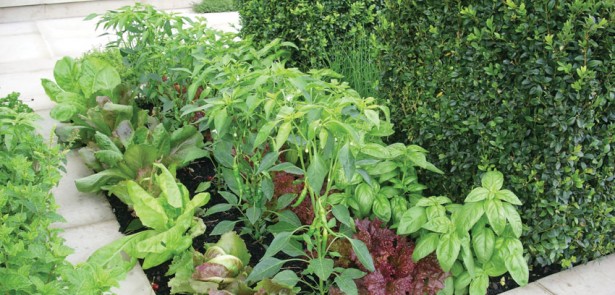
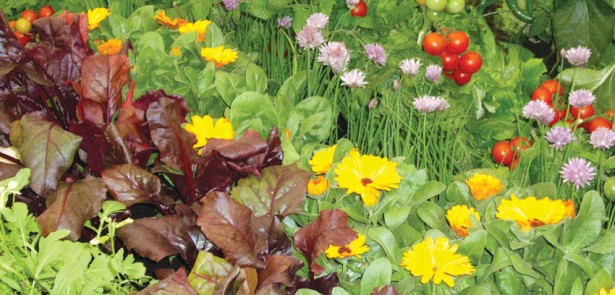
Start growing your own food this year and enjoy the freshest, most flavoursome food you’ve ever experienced. And as Benedict Vanheems reveals, you don’t need a massive plot to get started
You can’t have failed to notice the green revolution sweeping the nation. Brits, it seems, have fallen back in love with vegetable gardening! No longer the preserve of pipe-smoking men in braces, growing our own has become de rigueur once again as people from all walks of life become infected with the kitchen gardening bug. It comes as no surprise – taking the plunge and growing even a small proportion of your own food is undoubtedly the most rewarding decision you’ll ever make.
Whether you want to grow food for freshness, to try out unusual varieties of vegetable, maximise the nutrient content of your food or simply save money you’ll embark on a journey full of new discoveries. Not every vegetable will be suitable for every situation, but rest assured that no matter what space you have available, there will be something you can grow.
Before pulling on the Wellies and reaching for the spade, however, it’s a good idea to consider your options and carry out a little planning. Where you grow your vegetables matters and can make all the difference between bumper yields and disappointment. Time spent carefully mulling over any new plot now will save headaches later on, and with a productive plot set up, you’ll be able to repeat your success year after year.
Rows of crops can look as appealing as any flower garden. Contrast leaf colours and textures for maximum effect
Most vegetables are annual plants or are grown as annuals, which means they complete their lifecycle within a single growing season. Their relatively quick growth allows greater flexibility in planning and it means that if you haven’t got it right one year, it’s easy enough to try a different approach the next!
Allotment or garden?
It’s perhaps a sign of the times and the seemingly endless rise in popularity of home-grown food that allotment waiting lists stand at an all-time high. Fortunately Peterborough has ample allotment provision, with 23 allotment fields containing 1,400 individual plots. Annual rents are modest and the council can even arrange to clear and prepare rough plots to get you on your way. Contact Peterborough Direct on 01733 747474 to find out more or visit the council website www.peterborough.gov.uk to find your nearest site.
If you are considering a plot then make sure you visit a few allotment sites first to get a feel for them and to decide if an allotment is right for you. Bear in mind you will need to travel to the site regularly – will you have the time and inclination to do so on a cold winter’s day? If you have to drive then will you be spending more in petrol than you’ll be saving in food costs?
Of course, the easiest way of raising vegetables is to grow them at home in a spare patch of ground. Traditionally the veg patch has been confined to the bottom of the garden, screened off from view along with the compost heap and tool shed. Yet modern veg gardens can be as attractive as any other part of the garden thanks to the many new colourful and textured varieties that have appeared over the years. Beauty is in the eye of the beholder and it’s up to you how to plan your plot, with some gardeners seeing regimented rows of vegetables in pristine order as a thing of great beauty and others preferring a less formal approach.
The potager is a happy compromise between flower garden and vegetable plot. It mixes the two, along with useful herbs, to create a garden that looks literally good enough to eat. Potagers can be as ordered or as seemingly chaotic as you like and by mixing up plants it makes life that little bit trickier for pests, which will find it harder to pick out and home in on specific crops.
Mix things up
Today there’s little reason to tuck the productive plot out of site. Many varieties of vegetable are incredibly beautiful in their own right. For example, the brilliant rainbow-coloured stems of chard ‘Bright Lights’ or the salmon-pink flowers of runner bean ‘Celebration’ would brighten up any border. Even the humble lettuce has varieties with deep crimson or finely speckled leaves. When teamed up with other ornamental plants, vegetables can take on a whole new light – the feathery foliage of carrots erupting from in-between colourful bedding plants, for instance. Bringing vegetables out into other parts of the garden can be a very logical and attractive solution where space is at a premium and a dedicated kitchen garden isn’t an option.
Vegetables that naturally hold visual appeal can be enhanced further by sowing or planting them out in imaginative ways. If you are opting for a stand-alone kitchen garden then consider setting out your vegetables in blocks, wedges or swirls, rather than straight rows. Mix up crops of a similar height, growing habit and spread to contrast leaf shapes, textures and colours. Use every surface to its fullest extent – think vertically as well as horizontally and make a focal point out of wigwams of runner beans or arches of scrambling squashes.
Raised standards
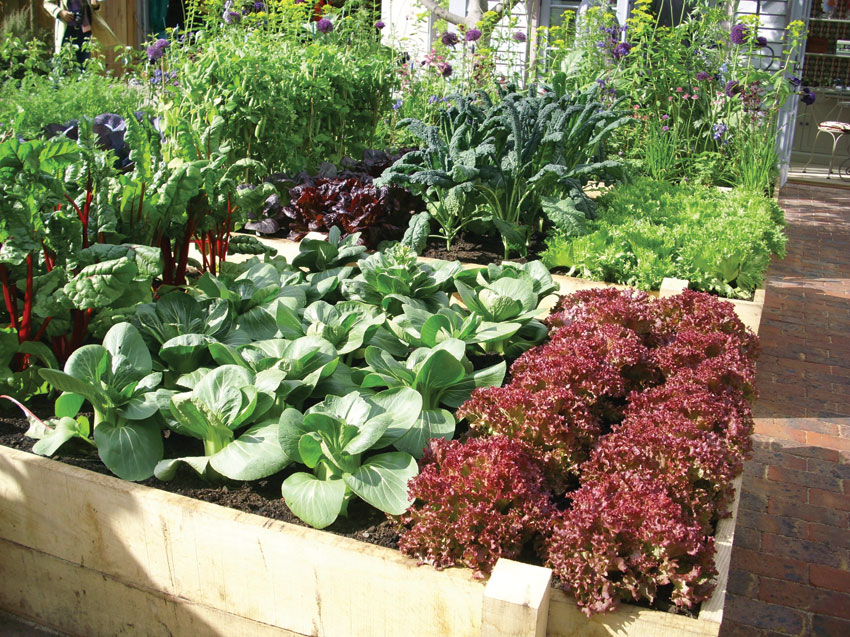 Raised beds have become popular for vegetables in recent years and enable success on even poor soil. They improve drainage immensely, making them the natural choice for those gardening in often waterlogged conditions, and will even give a bit of a head start at the beginning of the growing season as they warm up quicker than the surrounding ground. Many kits are available to buy or they can easily be homemade from old sleepers or scaffold boards nailed to corner posts. Filled with a soil-based compost they will give excellent conditions to begin your growing adventure.
Raised beds have become popular for vegetables in recent years and enable success on even poor soil. They improve drainage immensely, making them the natural choice for those gardening in often waterlogged conditions, and will even give a bit of a head start at the beginning of the growing season as they warm up quicker than the surrounding ground. Many kits are available to buy or they can easily be homemade from old sleepers or scaffold boards nailed to corner posts. Filled with a soil-based compost they will give excellent conditions to begin your growing adventure.
Raised beds are easy to tend and make planning easier
Raised beds should be narrow enough that the middle of the bed can be reached from the sides, doing away with the need to tread on the growing area and thereby reducing the risk of compaction. The depth of beds can vary, with 30cm (12in) best for root crops such as carrot and 15cm (6in) satisfactory for leafy salads and most other shallow-rooted veg. The beds will help to organise your kitchen garden plot and will make planning of the various groups of crops significantly easier.
Potted crops
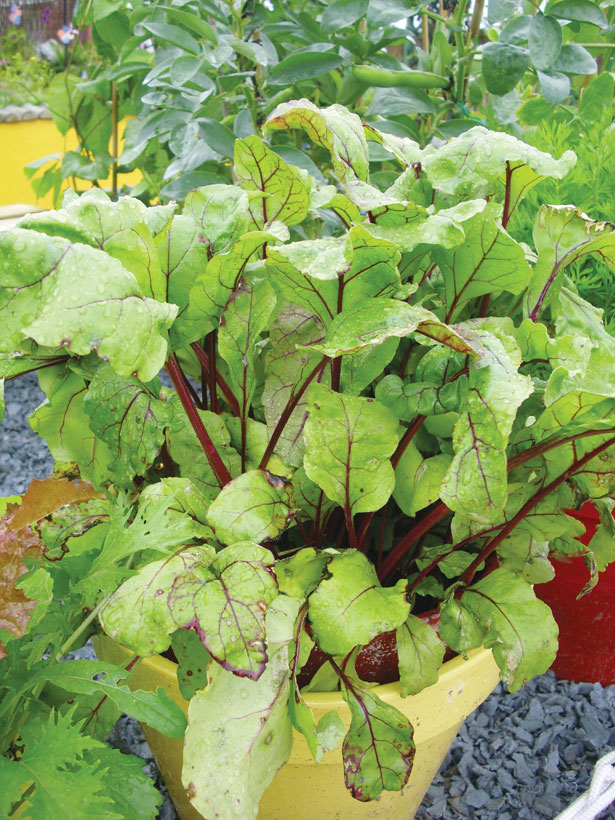 Pots and other containers can grow a surprising range of vegetables, here beetroot
Pots and other containers can grow a surprising range of vegetables, here beetroot
For those without a garden but eager green fingers just about any container is suitable for growing vegetables. Anything that’s capable of holding compost can be pressed into service: fruit crates, stacked tyres, old Wellies and even the kitchen sink! Container kitchen gardens can be every bit as productive as a ground-based veg plot and will brighten up a patio or balcony. Beetroot, salads, tomatoes and root vegetables are all contenders and there are dwarf varieties of larger vegetables perfect for the container gardener. Even potatoes, which traditionally require plenty of space, can be grown with great success in special potato barrels or old compost bags – see the box right for a few ideas.
If you plan to grow your produce in pots then make sure there is adequate drainage to keep plants from sitting in excess water. Pick ones with drainage holes in the bottom or drill your own into the base at regular intervals. Consider adding a layer of broken pots (called ‘crocks’) to the bottom of your container to further improve drainage and raise it up off the ground on pot legs or pebbles so that water can properly drain away.
Container crops will require a little more attention as they will be prone to drying out. Water them regularly and apply a liquid feed for your edible charges as the season progresses so that healthy growth is maintained.
Hanging gardens
Hanging baskets offer another planting opportunity
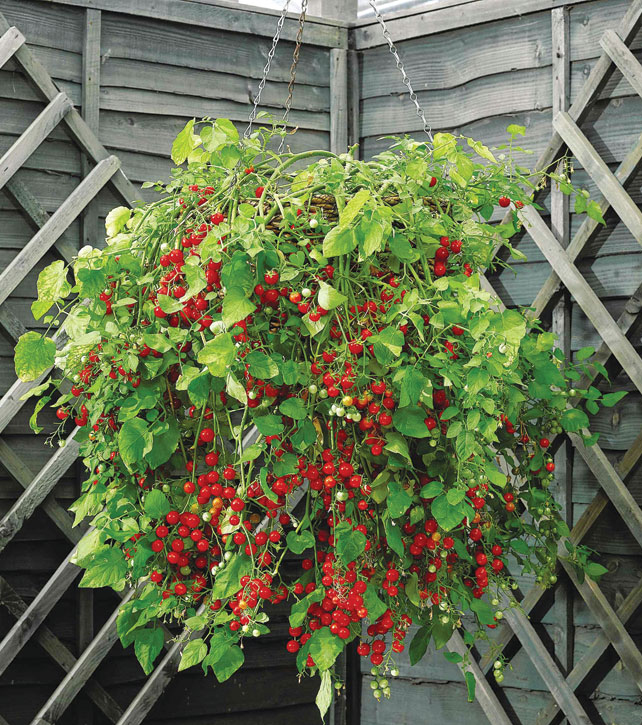 Hanging baskets of vegetables can look every bit as appealing as those containing flowers. Many veg are almost purpose-bred for this, such as cherry tomatoes, miniature peppers or many of the herbs or salad leaves. They will increase the available space for growing food – allowing an additional layer of productivity. Frame doors with hanging baskets of goodness to make a cheery entrance.
Hanging baskets of vegetables can look every bit as appealing as those containing flowers. Many veg are almost purpose-bred for this, such as cherry tomatoes, miniature peppers or many of the herbs or salad leaves. They will increase the available space for growing food – allowing an additional layer of productivity. Frame doors with hanging baskets of goodness to make a cheery entrance.
Window boxes, too, will open up new opportunities for kitchen gardeners. Try filling one with evergreen herbs for regular picking to add flavour and interest to your cooking. Choose variegated varieties and mix up leaf textures to make a real impact. Make sure that both window boxes and hanging baskets are properly secured so that they do not come loose in a gust of wind.
In the bag
For an instant solution that requires minimal preparation consider grow bags. These are most often used for growing fruiting vegetables such as tomatoes, peppers and courgettes, but can equally be used for leafy crops, turnips and just about any vegetable, even climbing beans and peas. Ideal for patios, they are also a good short-term solution when tackling a new plot – simply lay the grow bags on top of the weedy ground and allow them to smother the weeds while giving you a crop.
When buying a grow bag it’s important to go for the best quality you can afford. Thin bags may be cheap but they will quickly run out of nutrients and won’t offer plants the support they need. Thick, well-filled bags will pay back their initial investment through bigger and better crops over a longer period of time. Be sure to ‘massage’ grow bags thoroughly before use to break up any clods of compost and ensure an even consistency.
The options for growing your vegetables are plentiful, so don’t be put off if you don’t have the space or time to tend a larger plot. Start small and work your way up as your confidence grows. Once you realise that you can indeed grow your own food, there will be no holding you back!
Start small and work your way up as your confidence grows



